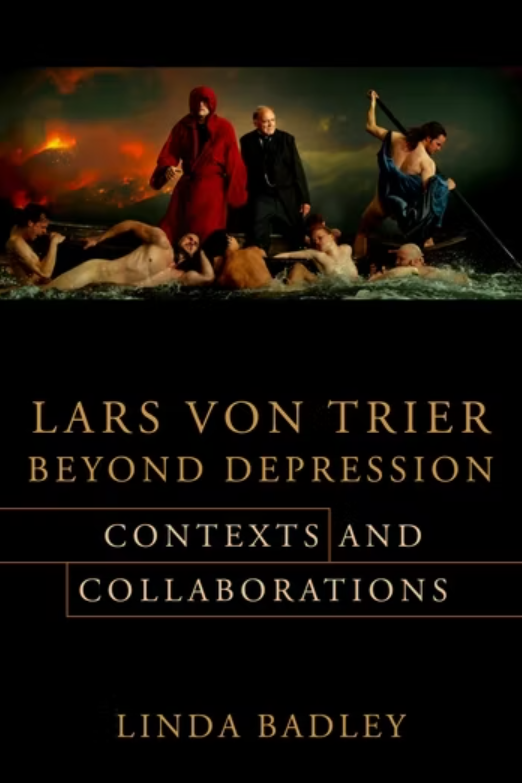
Reviewed by William J. Simmons
Linda Badley has a problematic fave, as we all must. The Youths use the term “problematic fave” to refer to an artist whose work you admire, despite and because of their propensity for cancelation. It is a way of signaling the individuality of attachment to objects of culture — for love, a form of fandom, is a discourse that is both social and inscrutably unique to each of us. Above all, fandom for many people, especially the so-called Youths, offers the only respite from depression. It is true that Badley is von Trier’s theorist and interviewer of record, but she is likewise a fan. This volume showcases that fandom without immediately transforming love into critique or biography into history, though Badley accomplishes both of those transubstantiations. Lars von Trier: Beyond Depression is an essential project not only for von Trier studies, but more generally queer and feminist art/film histories that continue to chip away at the ongoing and rigid binaries of affect versus deconstruction, attachment versus distance.
Yes, Lars von Trier is spectacularly problematic, given his intersection with misogyny, racism, Nazism, and sexual assault. Saving men from cancellation is a masculinist activity generated by the boyfriends of our pasts who feel the need to defend Woody Allen, for instance. That is not Badley’s project in these collected essays. Instead, her goal is to empathetically question the ongoing assumption of deconstruction and criticality as markers for important or avant-garde art. And there is no better subject than von Trier, who oscillates hysterically between manly pedant and melodramatic heroine, as history itself does. Badley traces a fascinating deconstructive-melodramatic dialectic in von Trier’s work from Antichrist (2009) to The House That Jack Built (2018) that she describes as a kind of critical Romanticism. In this way, beauty, affect, ostentation, delicateness, belief, and theatricality become as useful to the analysis of film as skepticism, scarcity, and paranoia. For Badley, von Trier is exemplary of reparative reading, and where better to find a source of repair than a figure so forcefully associated with the violence of deconstruction?
For to repair is to love with abandon and to be empathetic with ourselves for our choices in love. This volume is so important for a number of reasons, but especially for its unabashed use of archival materials and interviews with von Trier in order to not only change the way we talk about his films, but about film history altogether. Badley has interviewed von Trier a number of times, itself a feat whose mechanics ought to be taught to graduate students and undergraduates. The fear of interacting with our objects of study is also rooted in class- and gender-based anxieties about being taken seriously, and it is the duty of educators to cultivate the belief that all students can and should converse with their intellectual idols/loves.
Additionally, Badley uses archival materials made available to her by von Trier and the team at his production company Zentropa, such as early and markedly different drafts for Antichrist. The consultation of the archive has been saved from accusations of preciousness most visibly by practitioners of visual culture studies. Conversely, there remains an implicit skepticism about interviews and other interactions with artists themselves, despite the ridiculousness of any such division (especially in art history and film, where historians, critics, and artists invariably write about their friends). What is so necessary about Badley’s book is that, as a fan might, she relishes the archive of and personal conversations with her object of study without the baggage that might be attached to it. It reminds me of Jill Lepore’s essay “Historians Who Love Too Much: Reflections on Microhistory and Biography,” in which Lepore describes touching Noah Webster’s hair in the Amherst College Library. Yet Badley does not feel the need to clear her throat at length about the pros and cons of biography. She just writes what she writes, as von Trier essayistically films what he films, and what an instructive exercise it is. Lars von Trier: Beyond Depression makes clear that history itself is a project of affection, an earnest but never hermetic dance akin to the Wagnerian planets in Melancholia (2011).

